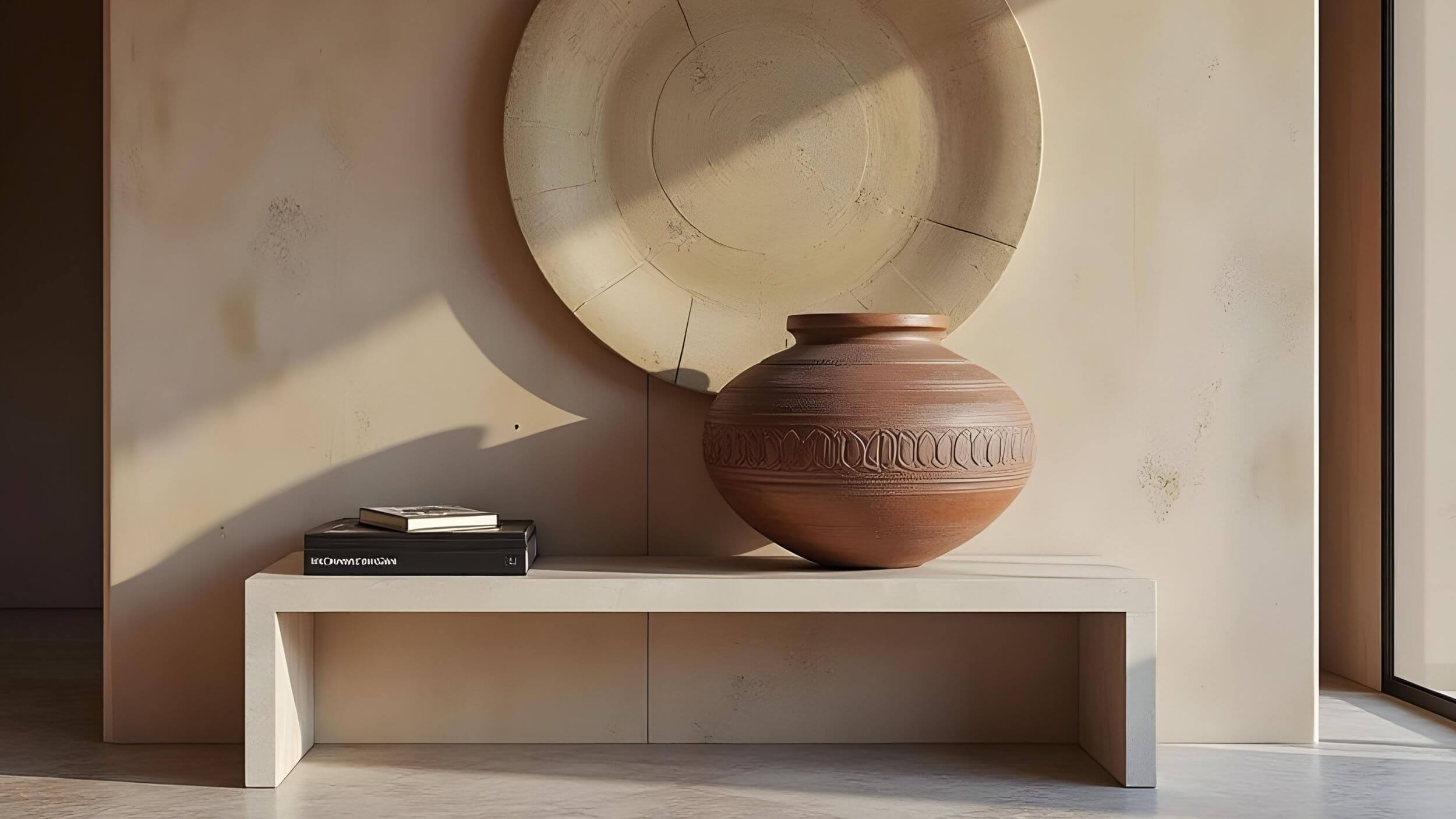African pottery pieces are conversations across time. Generations of knowledge—about clay, fire, and what a community needed—all in a seemingly simple pot. No two pieces are the same, and that’s the magic of it.
Styles shift as you move across the continent. In West Africa, pots are built with coiled layers that rise like sculpture. Down south, burnished finishes shimmer like polished stone. And these vessels weren’t made for shelves. They held water, brewed stews, and served as communal dishes. They played essential roles in rituals and everyday life.
Today, we unpack the history, the genius behind the techniques, along with 7 pottery styles that can hold their own in any contemporary space. Let’s take a closer look.
In this article:
- Why African Pottery Matters
- How to Make African Pottery: The Complete Process
- 7 African Pottery Designs That Belong in the Spotlight
- How to Style African Pottery in Your Home
Why African Pottery Matters
African pottery goes back over 12,000 years. Long before potter’s wheels existed anywhere, African hands were already shaping clay into vessels that were both practical and beautiful. These pots held water and brewed stews. They were made for daily life.

As communities traveled and traded across the continent, styles evolved. The Igbo of Nigeria created terracotta with incredible detail. The Songye in Central Africa built tall, graceful storage jars. In the south, artisans burnished their pieces until they gleamed like polished stone.
And in every tradition, pottery carried meaning. It represented prosperity, connected families to their ancestors, and held spiritual power.
You May Also Like: African Bronze Art | From Ancient Kingdoms to Modern Homes
How to Make African Pottery: The Complete Process
Making African pottery takes patience, muscle memory, and a deep understanding of materials. It’s a methodical process—and one that leaves little room for shortcuts.
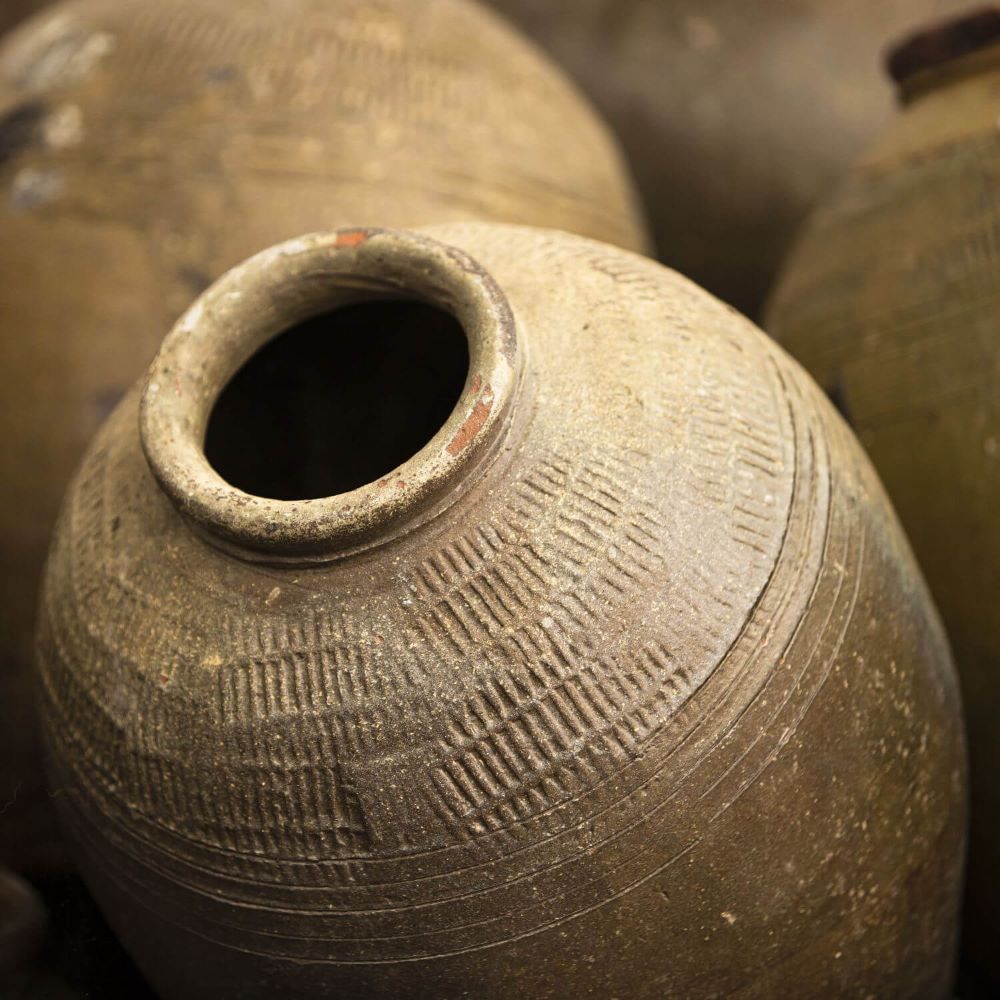
Step 1: Clay Gathering
It started with the earth. Younger people harvested clay during rainy season—when it was soft enough to work with. But they didn’t just scoop the clay: they had to knead it, strain it, and work it until it was completely smooth and free of debris. A lump or air pocket was all it took to ruin the entire piece.
Step 2: Building Without Machines
No potter’s wheels. Just hands. In West Africa, potters coil long ropes of clay and stack them upward, smoothing as they go. In other regions, they use molds—sometimes ancient pots themselves, sometimes carved wooden forms. Methods may vary, but they all require balance, intuition, and years of practice.
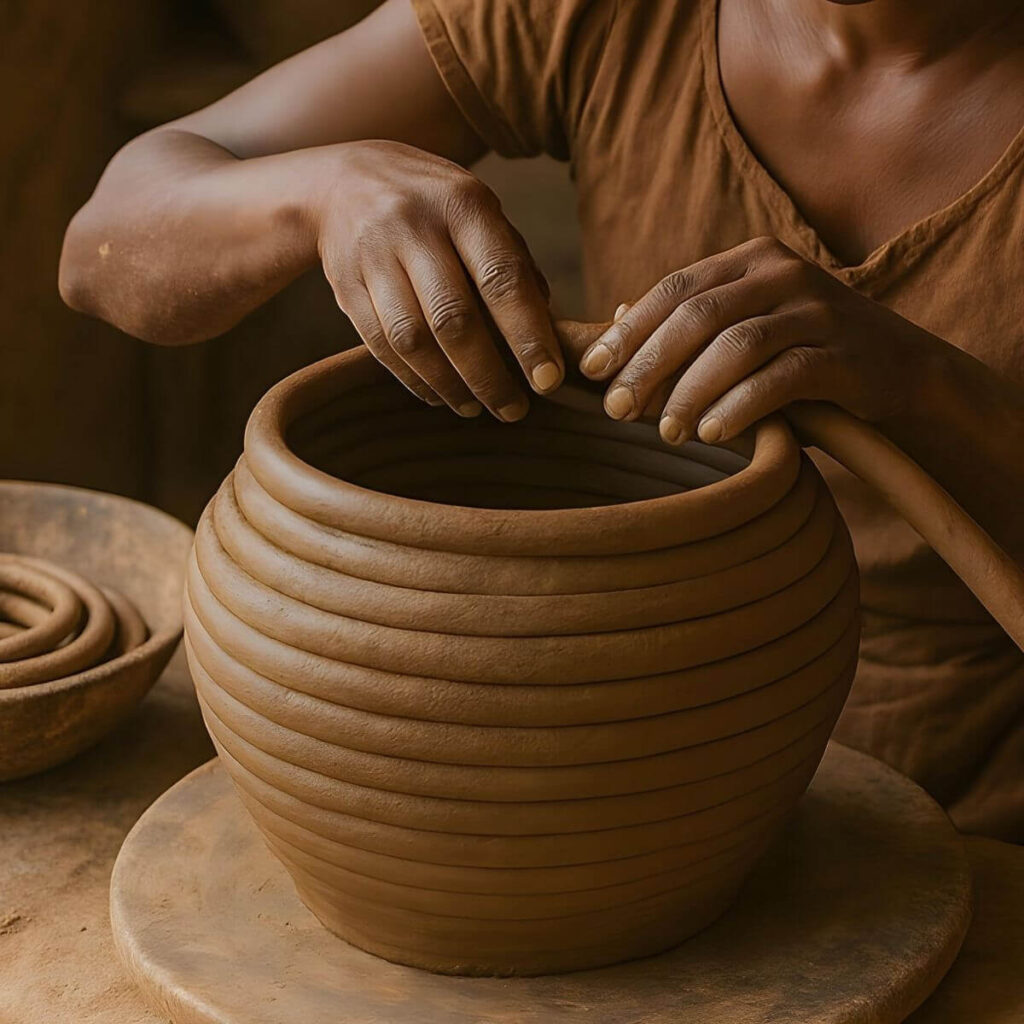
Step 3: The Slow Dry
Once shaped, pots dry in open air. Rush this, and the whole thing cracks before it ever sees fire. Then comes decoration: patterns etched in, symbols carved, textures pressed deep. These choices aren’t random embellishments, they’re signatures. They tell you who made the pot and where it comes from.
Step 4: Fire and Burnish
Instead of kilns, many potters use open fires. Stacked wood, dried straw, and precise timing. The result is a durable, earthy finish that can survive daily use. Sometimes, pots get burnished after firing—polished with wax or animal fat until they glow. You see this technique especially in South African Zulu pottery.

Who Gets to Be a Potter
This matters more than people realize: In many African communities, pottery isn’t open to everyone. It’s a right. It passes through family lines and belongs to specific roles within the village. Sometimes, only women hold the knowledge. Sometimes it’s sacred work with spiritual responsibility.
This isn’t about gatekeeping, it’s about tradition. The craft is tied to ancestry, to land, to stories that matter.
Explore another African craft: Traditional African Masks: 7 Icons That Steal the Spotlight
7 African Pottery Designs That Belong in the Spotlight
These standout designs reveal how wide African pottery really is. They’re beautiful, clever, rooted in tradition, and they shine in modern homes.
1. Zulu Beer Pot – South Africa

Known as ukhamba, this pot was designed for sharing sorghum beer during rituals or community gatherings. Its rounded shape, delicate walls, and lack of foot make it perfect for communal use. The small bumps covering the surface aren’t decoration—they help you hold it. This is a pot that understands its purpose completely.
2. Bamana Water Jar – Mali
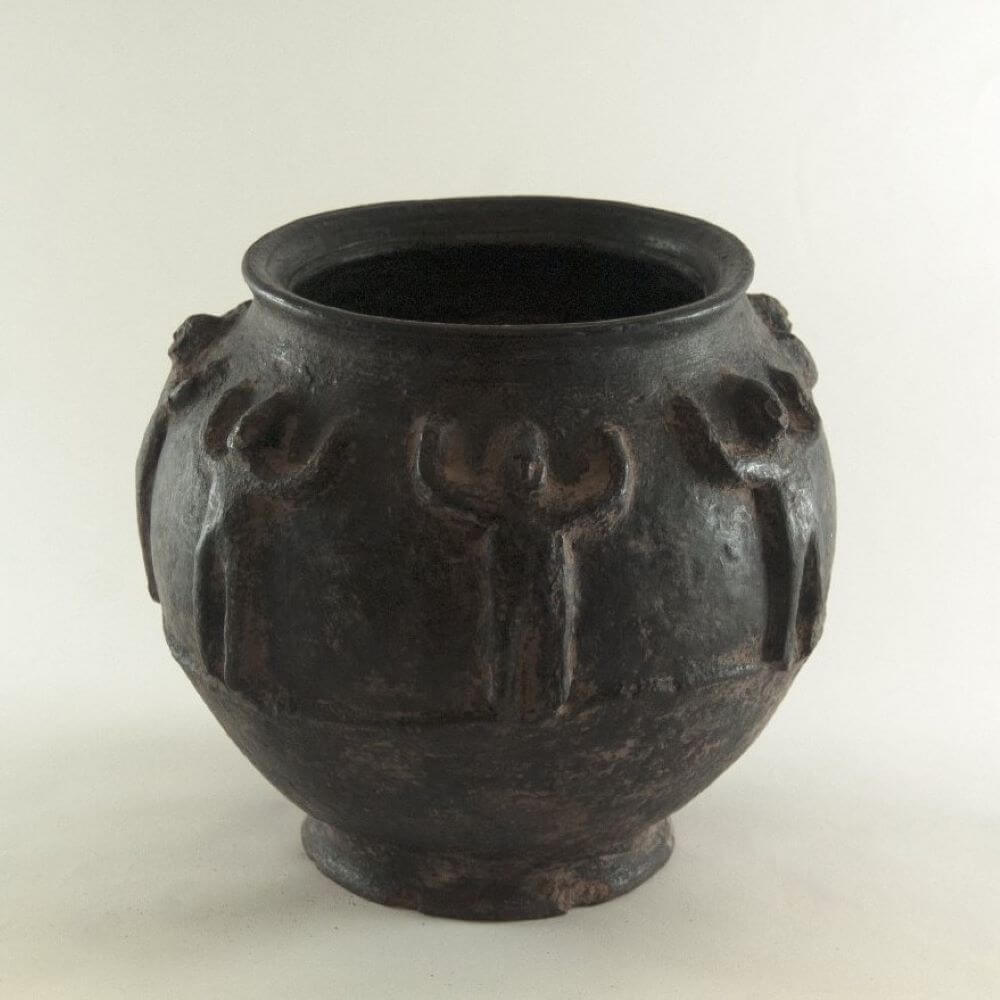
Bamana women have kept pottery traditions alive for centuries. Their pots, used for cooking or carrying water, often feature symbolic carvings across the surface. A post-firing dip into a natural dye bath gives the clay a rich, black finish that’s both dramatic and practical.
3. Igbo Terracotta Jar – Nigeria

Women in southeastern Nigeria made these for ceremony. They coil by hand. Raised floral motifs and incised lines cover the surface—showing exactly how detailed hand-built pottery can be. Igbo design thinks deeply. It’s elegant and full of meaning in every mark.
4. Songye Water Pot, Democratic Republic of Congo
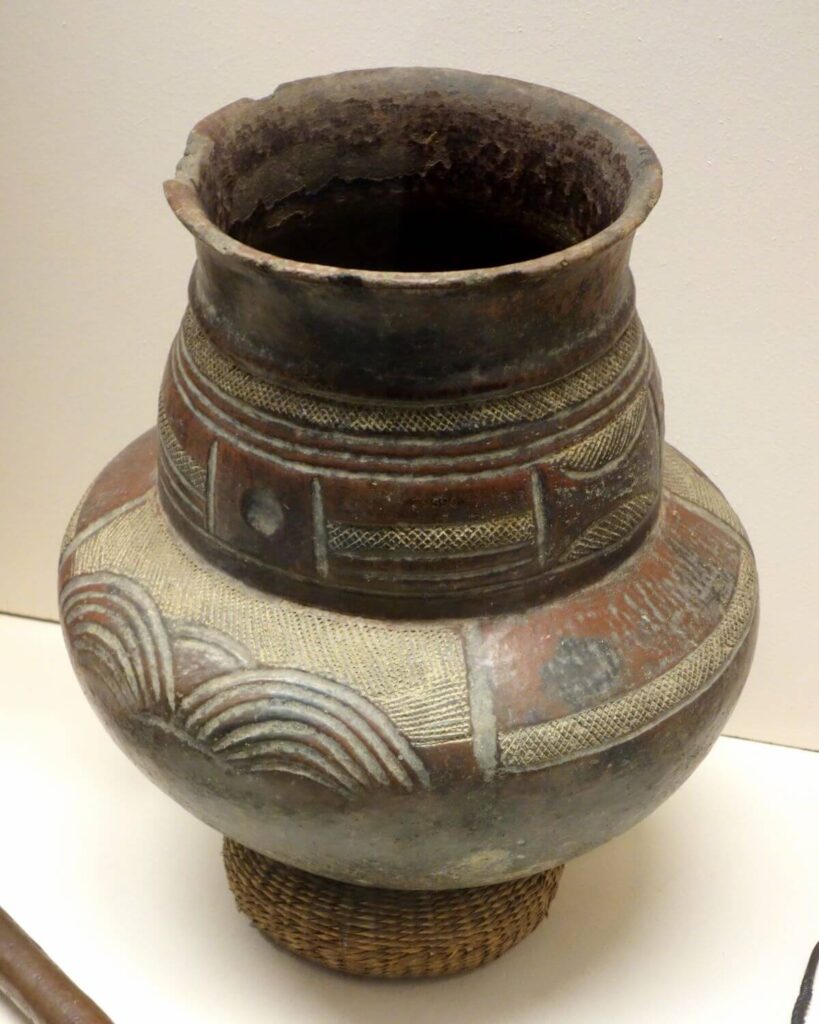
A tall neck rises above a round base. Vase-like proportions that reveal generations of refinement. Songye artisans shaped these vessels and carved patterns with wire and sharp tools, building them to last through daily use—carrying water, cooking food, standing the test of time.
5. Lobi Breawing Pot – Burkina Faso
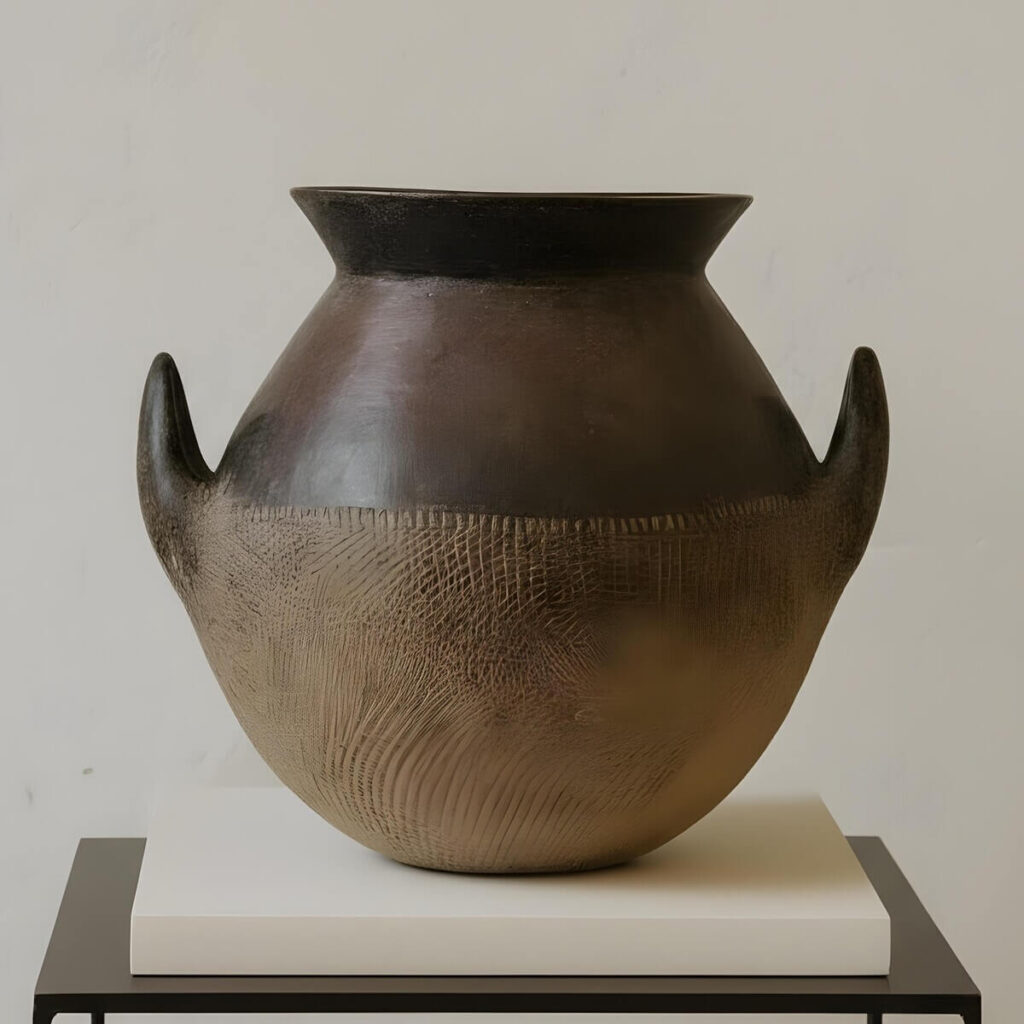
The Lobi made various ceramic styles and this brewing pot is one of them. It starts with a lump of clay at the base, then walls build upward with careful coils. Spikes on the surface were used to discourage children from touching it. Finally, handles on each side mean it was designed to sit over heat, to be held and moved. Function is baked into every curve.
6. Nupe Filter Pot – Nigeria
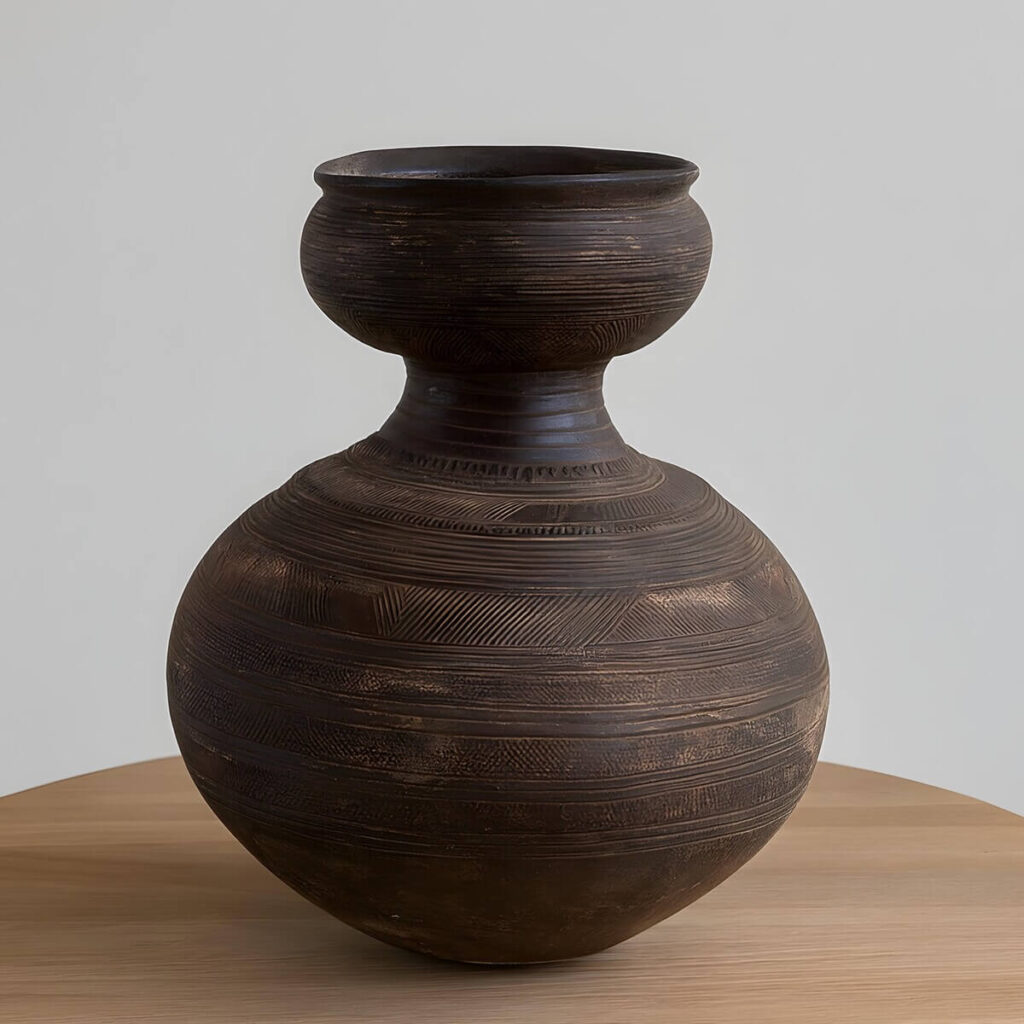
In Nigeria’s Niger state, the Nupe people had a long tradition of creating beautiful African pottery pieces. This design is genius. Two chambers, one on top of the other, separated by a narrow neck. Liquids poured in the top filter slowly to the bottom. The Nupe people didn’t just create pottery—they engineered it. And to elevate the look of their vessels, they added these delicate comb-carved textures.
7. Ladi Kwali Pot – Nigeria
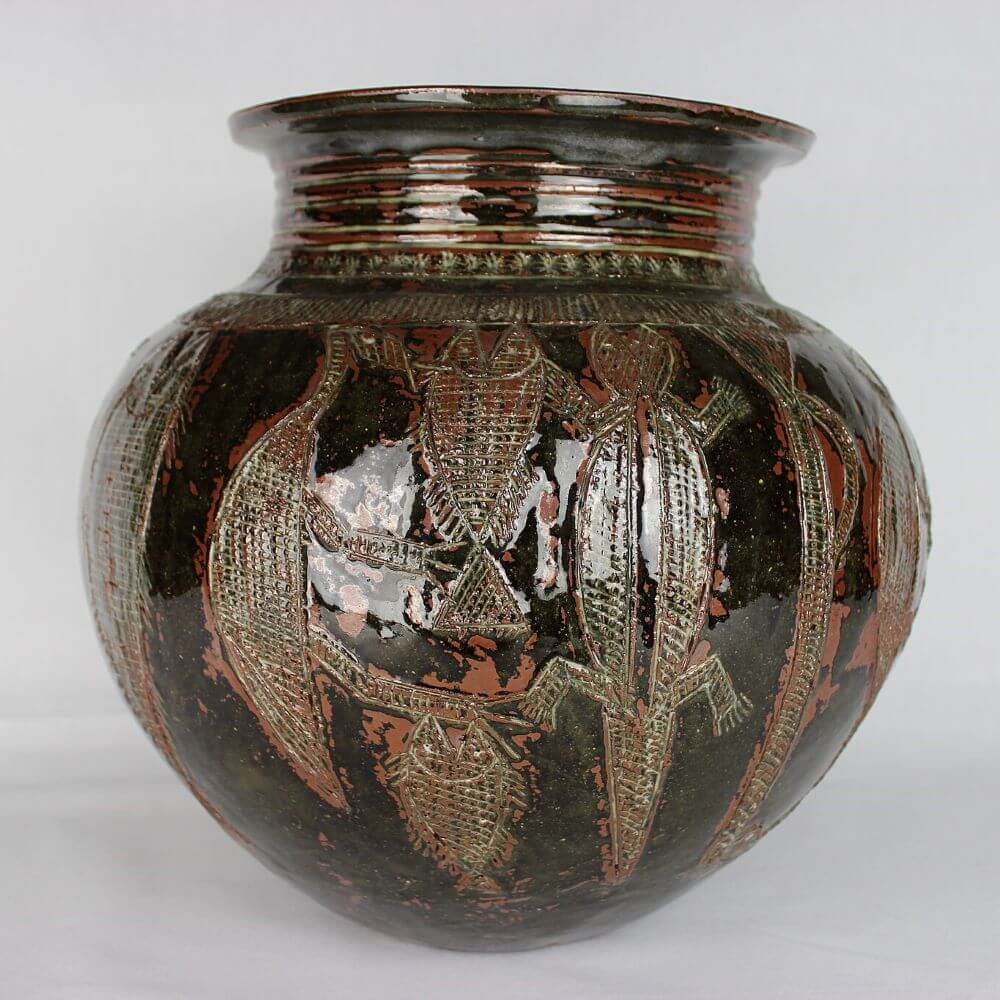
Her name matters. Ladi Kwali brought Nigerian pottery to the world in the mid-1900s. She took traditional techniques and evolved them—mixing ancient methods with modern glazing and fine carving. Her pots feature animals and plants, connecting nature to craft.
She was so celebrated that Nigeria put her on their currency. Her legacy proves that tradition can evolve without losing its soul.
How to Style African Pottery in Your Home
These pots deserve to be seen. Here’s how to do it right.
On a table
A bold ceramic piece on a console table in your entryway or on a living room side table creates immediate impact. It sets the tone. It gives the space an edge.
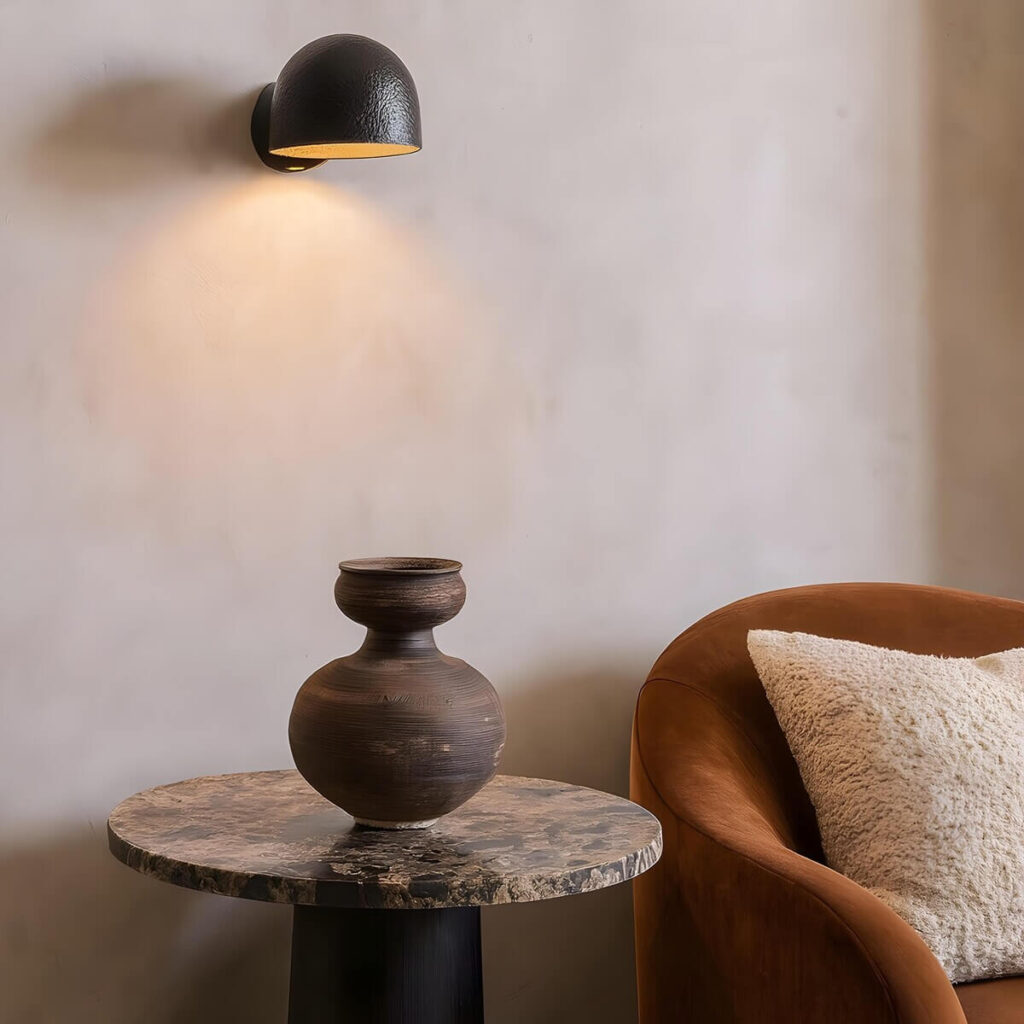
On the chimney
If you have a chimney ledge, use it. Height spotlights the piece. Gives it quiet authority.
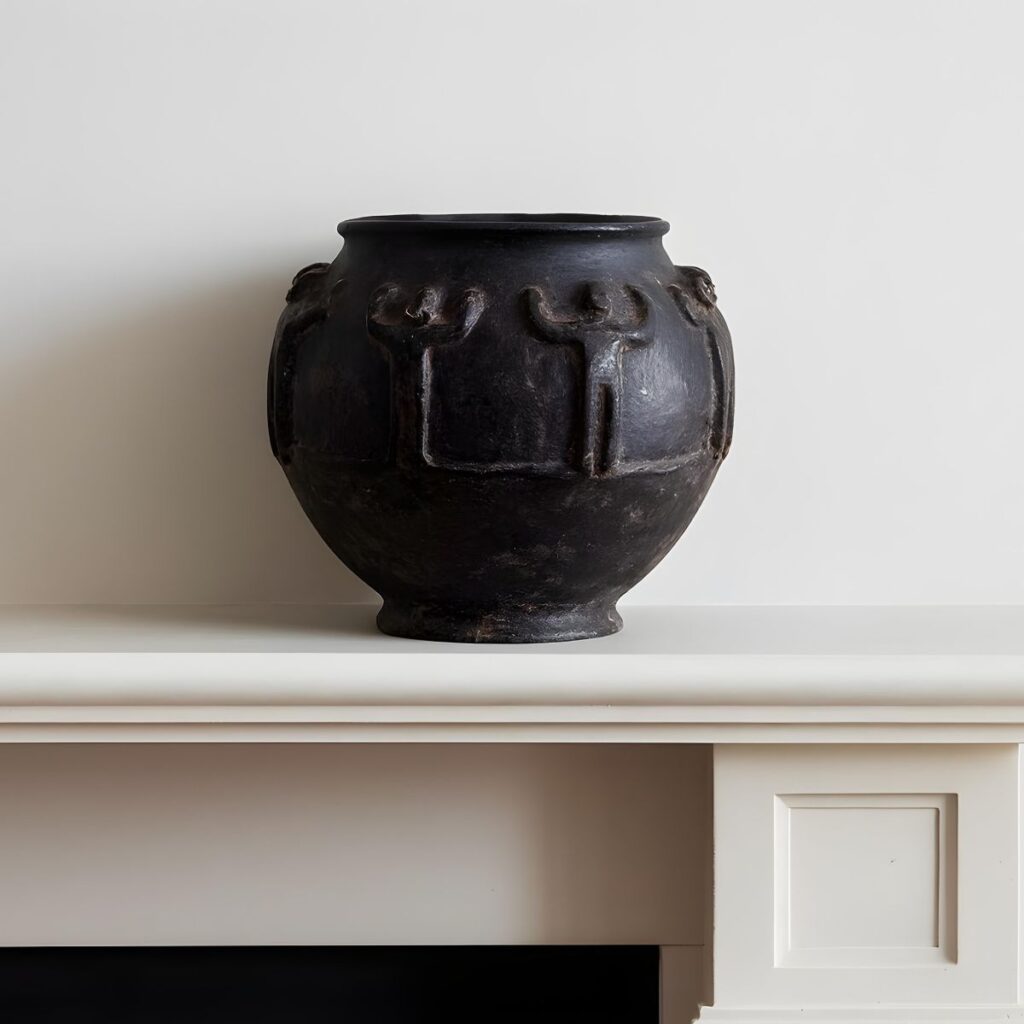
In a niche or alcove
A wall niche frames pottery like a gallery. Curated. Architectural. Intentional.
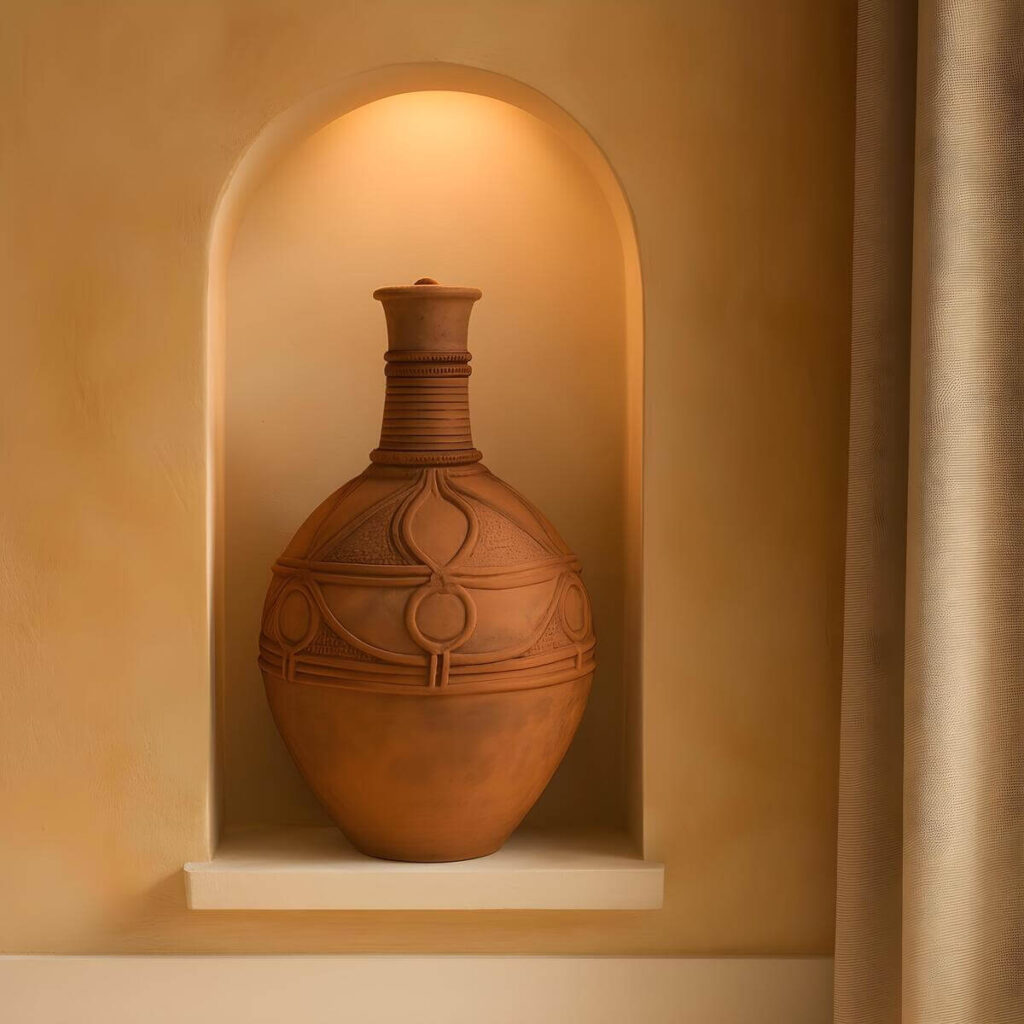
Where to Find African Pottery
Thankfully, in this day and age, you don’t need to travel far to bring African pottery into your space. By looking in the right place, these beautiful pieces can be yours to admire and showcase in your own space.
If you’re looking to purchase a piece of African pottery, you’re in for a treat: Khayni offers a large pot selection, with plenty from the Zulu craft, plus many other exceptional pieces from different African regions.
Beyond being decorative, African pottery carries generations of artistry and purpose.
Once utilitarian, these vessels now stand proudly as sculptural statements. They invite admiration, spark curiosity, and bring a piece of African heritage into everyday spaces. Whether showcased on a table or tucked into a thoughtful corner, they always bring something special to the room.
Interested in African ceramic crafts? Discover Egyptian Ceramics: 6,000 Years of Pure Magic

